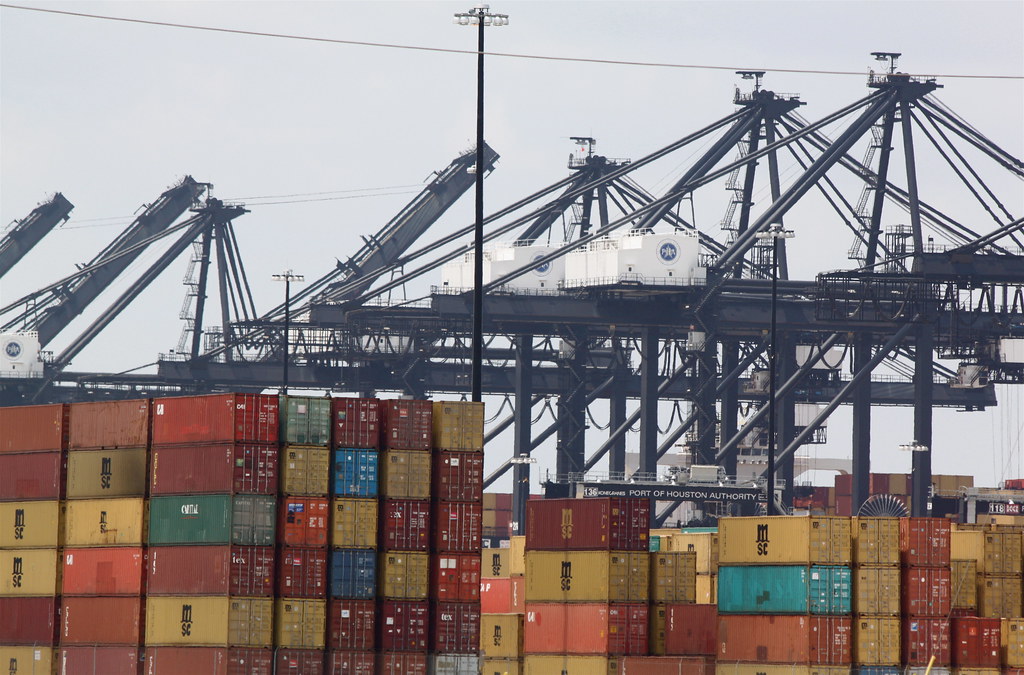The construction of a Peruvian Port of Chancay that hopes to operate at the end of 2024 is advancing. Built with Chinese capital, it seeks to be the leading logistics center that connects both shores of the Pacific.
Chinese capital expands investment in Latin American infrastructure
A megaport for South America and the Asian giant China is advancing steadily. China views this Peruvian Port of Chancay as a symbol of its investment in South America and is of enormous importance at a geopolitical level. It is being built about 80 kilometers from Lima, and the company responsible for the project expects it to be operational by the end of 2024. Its objective is to become the regional logistics center par excellence that unites both shores of the Pacific Ocean. The project represents a $3.5 billion investment. It will include 15 terminals to mobilize more than 5 million containers annually. It will even receive the largest cargo ships in the world.
Mario de las Casas, director of Public Affairs of the COSCO shipping company in the Port of Chancay, points out: “This port will allow having a direct route to export our products to an immense market that is Asia.”
Due to its more than 16 meters depth, users can unload ships with a capacity of 18,000 containers, which cannot currently be reached in any South American port.
This way, transporting goods will be more efficient by reducing the crossing time by ten days. The Peruvian megaport project is part of the Chinese expansion through the Andean nation that is also occurring in sectors such as mining or energy.
A strategic variable
At a recent international port forum held in Lima, the deputy general manager of Cosco Shipping, Gonzalo Ríos, stated that “beyond just being the port, it is a strategic variable in regional distribution chains.”
“The growth projected by the agricultural sector in Peru, all the large irrigation projects mean almost doubling Peru’s agricultural output, and that means enormous market growth that requires a concentrating port to reach consumers in Asia, particularly,” said Ríos.
The manager stressed that “the Asian market for this type of (agricultural) product is still about to grow a lot” and that in Peru, “making logistical ‘ clusters ‘ (groups) in each of its regions is the development path. “
” The Port of Chancay is becoming a player with a lot of modernity, with a lot of efficiency, with significant volumes of movement that, together with the ports of Callao, will mean that Peru is a leading regional ‘hub’ in this logistics component,” he said.
In the opinion of the president of the Maritime, Port and Customs Affairs Commission of the Lima Chamber of Commerce, Alberto Ego-Aguirre, since Peru is a small country, “success has to be achieved through exporting so that Peru continues to grow.”
“Ports move 85% of the products. Air travel will always be more expensive,” he noted.
For the union representative, his country’s economic growth “has to go hand in hand with the growth of the ports” and, related to the ports, “better roads.”
The Port of Chancay is a linchpin for Peru’s foreign trade
The Port of Chancay is a pivotal gateway to Peru’s international trade efforts, serving as a linchpin in the nation’s economic development and global connectivity. Situated on the Pacific coast, Chancay plays a vital role in facilitating the import and export of goods for Peru and the wider South American region.
This port’s strategic location is a cornerstone of its significance. With its proximity to Lima, Peru’s capital and economic hub, the Port of Chancay offers a convenient and efficient means of transporting goods to and from the country’s interior. This connectivity reduces transportation costs, fosters economic growth, and improves the country’s overall competitiveness.
Moreover, the Port of Chancay plays a pivotal role in Peru’s ambitious trade ambitions. As Peru continues to expand its trade relationships globally, particularly with the Asia-Pacific region, Chancay’s deep-water harbor has emerged as a critical asset. It enables larger vessels to dock, allowing for the efficient transfer of goods and enabling Peru to tap into the vast markets of Asia and beyond.
Additionally, the Port of Chancay is a vital node in Peru’s export-oriented economy, particularly in the mining and agricultural sectors. The port’s modern infrastructure and logistics capabilities ensure that Peruvian products can easily reach international markets, bolstering the nation’s foreign trade volume.
In conclusion, the Port of Chancay is not just a harbor but a linchpin of Peru’s international trade strategy, linking the nation to global markets, driving economic development, and propelling Peru onto the world stage as a significant player in international trade. Its continued development and expansion will be pivotal to the nation’s future economic success.

